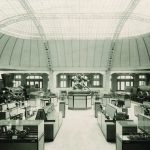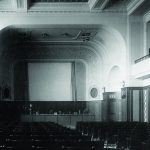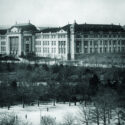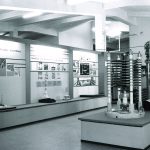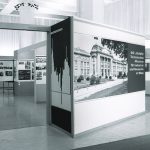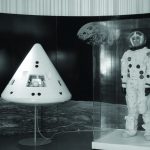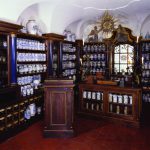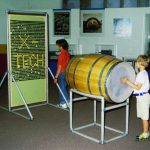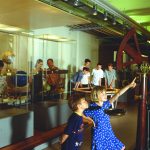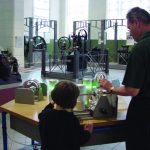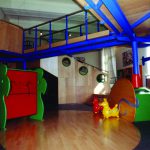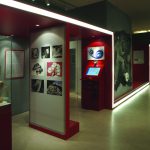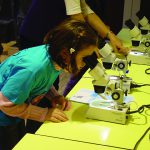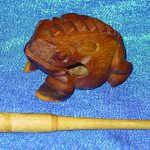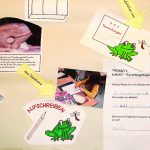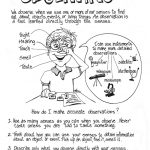Museums theme – Science vs technology in a museum’s display: changes in the Vienna Museum of Technology with a focus on permanent and temporary exhibitions and new forms of science education
Abstract
https://dx.doi.org/10.15180/170810/001This paper locates the development of a science and technology museum within the history of the predominantly object-based Vienna Museum, which was founded early in the twentieth century. It portrays interactive engagement with young people in terms of its continuity with the aim of popularising science, which had been a founding principle of the museum. At the same time, this paper examines the way in which the rise of interactivity represented a radical shift from an emphasis on technology itself towards a focus upon scientific principles, a phenomenon which in turn had an influence upon enquiry-based learning.
Keywords
anchored based learning, education, enquiry-based learning, innovation, museum development, museum display, science centre, visitor orientation
Introduction
https://dx.doi.org/10.15180/Looking back at the origins of science and technology museums we find that their foundation was prompted by a disparate variety of core ideas. The Musée des Arts et Métiers in Paris was, for instance, originally a collection of teaching materials for the Conservatoire National des Arts et Métiers of which it is still a part. Many institutions arose as a sort of systematic cabinet, and the ‘Warenkundliche Sammlung’ (a collection of materials and substances) preserved to this day in the Technisches Museum Wien (The Vienna Museum of Technology) is a relic of such conceptions. Munich’s Deutsches Museum, on the other hand, represents a class of institutions holding a very broad collection comprising machinery, telecommunication, etc., up to musical instruments. Such museums presented mixtures of science or technology related galleries, often, in the past, oriented to the engineer’s point of view.
However, in recent decades these originally disparate organisations have all changed their presentational styles. The first part of the following paper gives an overview of these changes at the Vienna Museum. But understanding the changes of gallery content is not sufficient. Modes of explanation and the understanding of the reception of content have been transformed, especially in those exhibits directed to young children. These factors have made necessary more elaborated methods of communication. This is demonstrated in the second part of the paper.
I. Changes in content – changes in presentation
https://dx.doi.org/10.15180/170810/002Technisches Museum Wien might be considered an exemplar of the transformation that the exhibition of science and technology issues in museums has undergone. Founded to mark the sixtieth anniversary of Emperor Franz Joseph’s reign, the Museum was originally established to showcase the achievements of Austrian technology, to be a great place of learning for the entire Austrian people, to advance technological progress and thus to be a lasting monument to Emperor Franz Joseph’s reign (Exner, 1908). These aims are explicitly displayed on a marble plate within the Museum.
In 1909, the Emperor himself laid the foundation stone to the Museum. Exhibitions had been planned by an expert committee, in line with the following principles: ‘A more vivid presentation of the museum’s objects is to help common man to better understand the design, operation and action of technical machinery and to internalise its nature.’ Predominantly comprised of major industrialists, the committee also ensured that the exhibition became a showcase of the Habsburg Empire’s industrial achievements.
From its early days, the Museum was thus conceived as a museum of industry and craft. It also housed a postal and a railway museum with a separate director. Its exhibition halls originally comprised 29 departments, only two of which focused on the natural sciences (Principles of technology and Metrology) on a floor space of about 1,000m² of a total of 16,000m². The exhibitions were strictly organised according to ideas of progressive technological evolution.
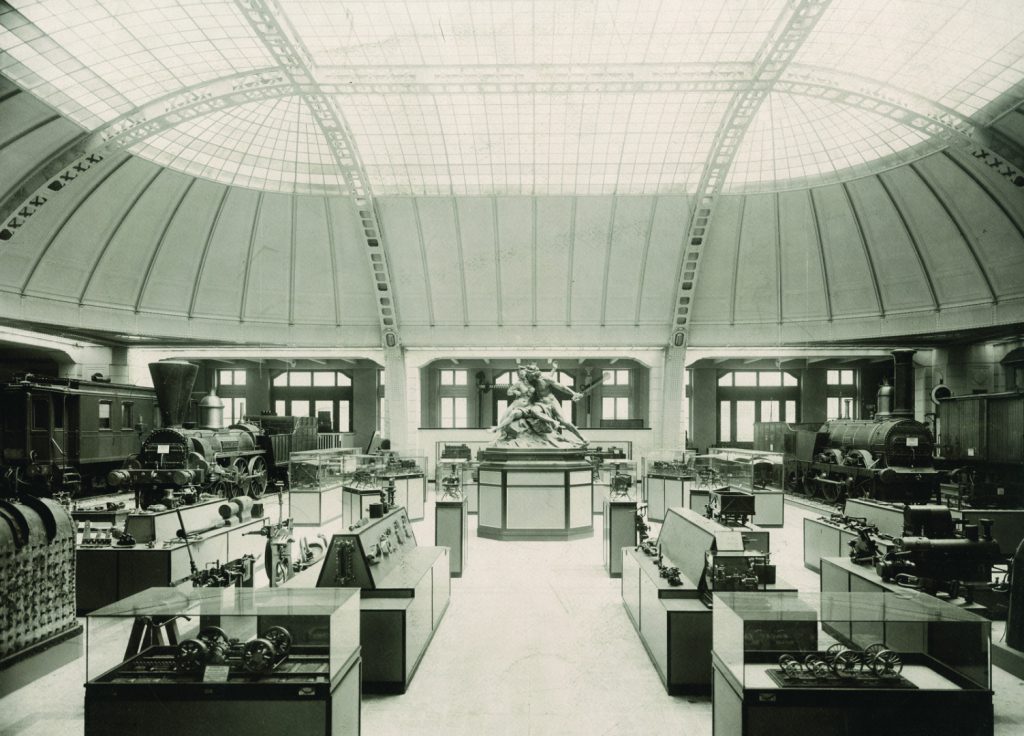
The Museum was established at a time of mounting interest in popular-education initiatives even though the general public itself paid more attention to questions of class conflict and national self-assertion than intellectual self-improvement. The naturalist Alexander von Humboldt (1769–1859), a firm believer in the betterment of humankind through scientific insight, had been the founding father of a movement which was to lead to the establishment of the Urania in Berlin. He started with a series of sixteen public lectures called Kosmos-Vorlesungen at the Berlin Singakademie as early as 1827–1828. His ideas gave rise to the foundation of several societies dealing with popularisation of science such as the Humboldt academy in 1878 and (last but not least) the 1888 Gesellschaft Urania (Petrasch, 2007). The aim of Urania was to ‘popularise the joy of scientific knowledge’ by means of an observatory, experimentation rooms and a science theatre. The idea quickly spread across Europe, spawning similar institutions in its capital cities, including Vienna with a first provisional building in 1898 and the final one in 1910.
Museums founded in around 1900 (such as the Deutsches Museum in Munich) often took up the Urania concept of popular science education and set up experimentation rooms. Technisches Museum Wien was no exception. Like all the Museum’s exhibitions, the experimentation area was organised according to criteria following the structure of the various science disciplines – mechanics, optics, electricity, etc. But it also presented cutting-edge scientific discoveries, such as X-rays or gas discharge phenomena. There is a photograph of the Museum showing an experimentation table set up on the stage of the Main Auditorium.

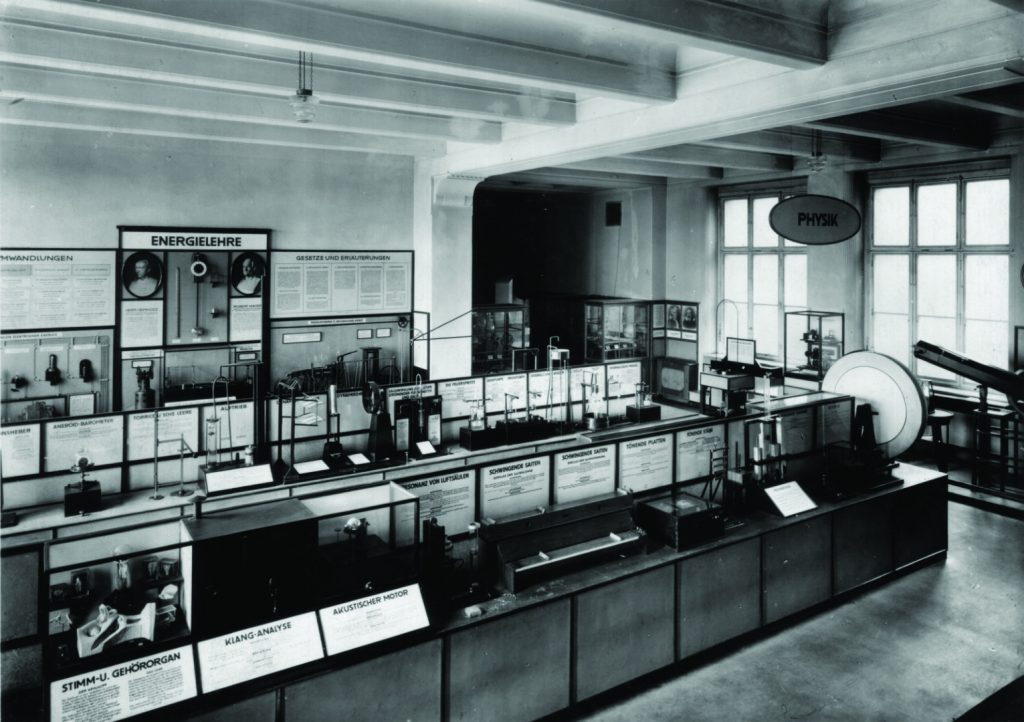
This fitted in with the Museum’s overall concept, which – modelled on the Deutsches Museum in Munich – placed special emphasis on live demonstrations and machines in operation. Such demonstrations were the only educational support made available, however. Visitors were expected to approach the objects on display with due awe, a fact also signalled by the majestic entrance porch with its columns reminiscent of a Greek temple.
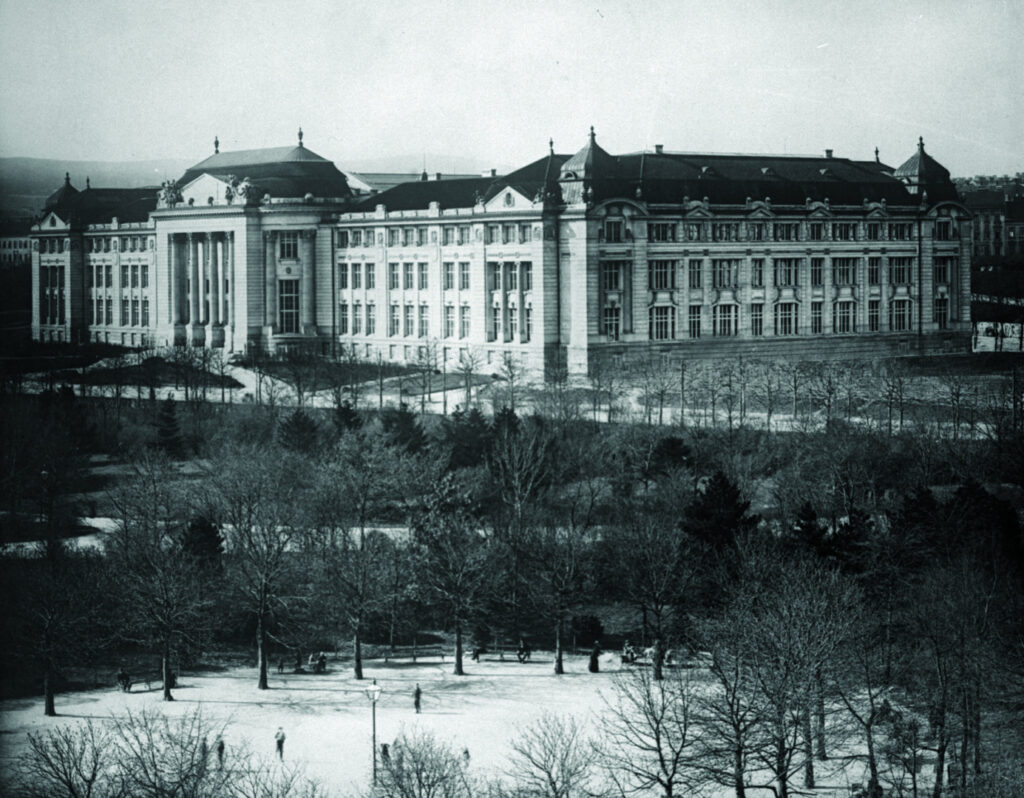
Europe as an exemplar?
https://dx.doi.org/10.15180/170810/003In the 1920s, Europe observed the technological and, especially, economic advancements of the US with keen interest. Thus, Technisches Museum Wien organised lectures on Taylorism and Fordism. At the same time, Europe served as a role model for the United States in creating museums of technology. This is probably due to the fact that industrialisation commenced in the US much later than Europe. The American Association of Museums was founded in New York in 1906; its first publication, The Industrial Museums was not published until 1925. Apparently lacking their own tradition, European-style museums met with general admiration in the States during the 1920s: ‘[…] the United States had nothing that corresponded with the Deutsches Museum or the Technisches Museum’ pointed out the newly appointed Director of the Chicago Museum of Science in 1929 (Kaempffert, 1929). Between 1922 and 1927 individuals and entire delegations travelled to Europe to look at the newly-founded museums of technology in preparation of setting up the industrial museum in Chicago. Even though, eventually, that museum was largely modelled on the Deutsches Museum, Vienna’s Technisches Museum was also regarded as exemplary. Incidentally, the close contacts established with the United Stated during these visits generated annual donations of $5,000 for the Vienna museum over a three-year period (Lackner et al, 2009).
On the occasion of these trips to Europe, the Association for the Establishment and Maintenance for the People in the City of New York of Museums of the Peaceful Arts commissioned two films, Museums of the New Age. A study in world progress (1927) and The Building and Operation of Industrial Museums (1928). These films showcased London’s Science Museum, the Conservatoire des Arts et Métiers in Paris, the Deutsches Museum in Munich and the Technisches Museum in Vienna. The first of these not only presented a cross section of the museums’ displays but also looked at the educational resources they made available. It ended with the caption: ‘Civilization is menaced. The problem must be met. Thus far only Europe has found the way.’ The film is a unique document of the early history of museums of technology and the efforts they undertook to communicate their subject matter.
Changes, not necessarily for the better
https://dx.doi.org/10.15180/170810/004An interesting indicator of a museum’s thematic focus is its programme of special exhibitions. Between 1929 and 1992, Technisches Museum Wien hosted 161 temporary exhibitions, 46 per cent of them technology-related, 11 per cent science-related and 43 per cent dedicated to other issues (art, photography, toys, museum history, work, people, anniversaries, etc.). Examples include an exhibition of 1964 marking forty years of Austria’s national broadcasting corporation, Österreichischer Rundfunk, another one commemorating the fiftieth anniversary of the foundation of Technisches Museum Wien, held in 1968, as well as two special exhibitions (in 1969 and 1971) on space flight and the Moon landing.
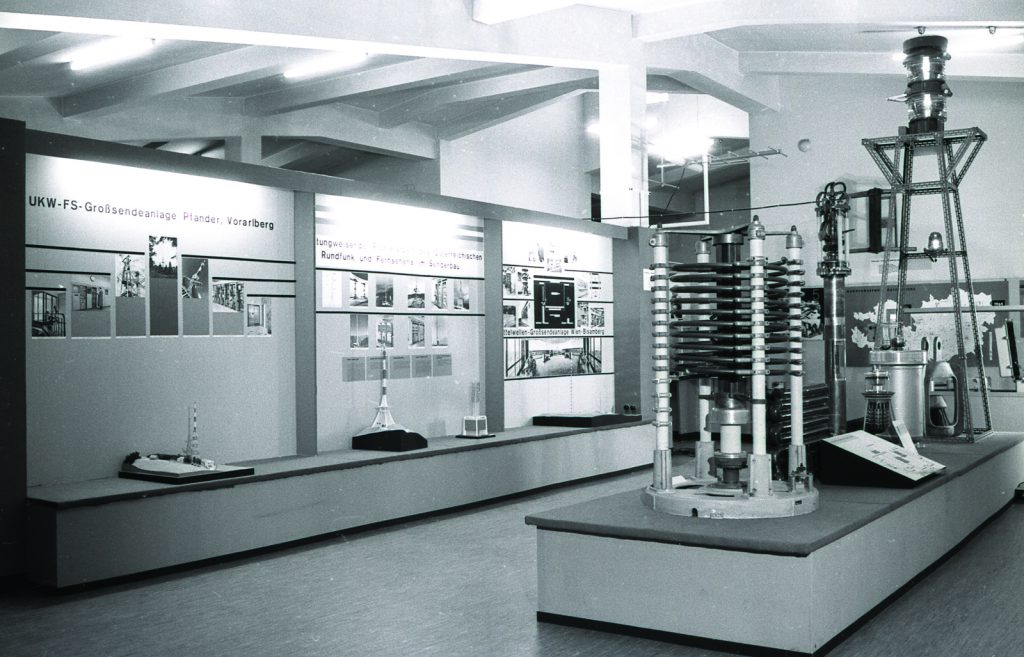
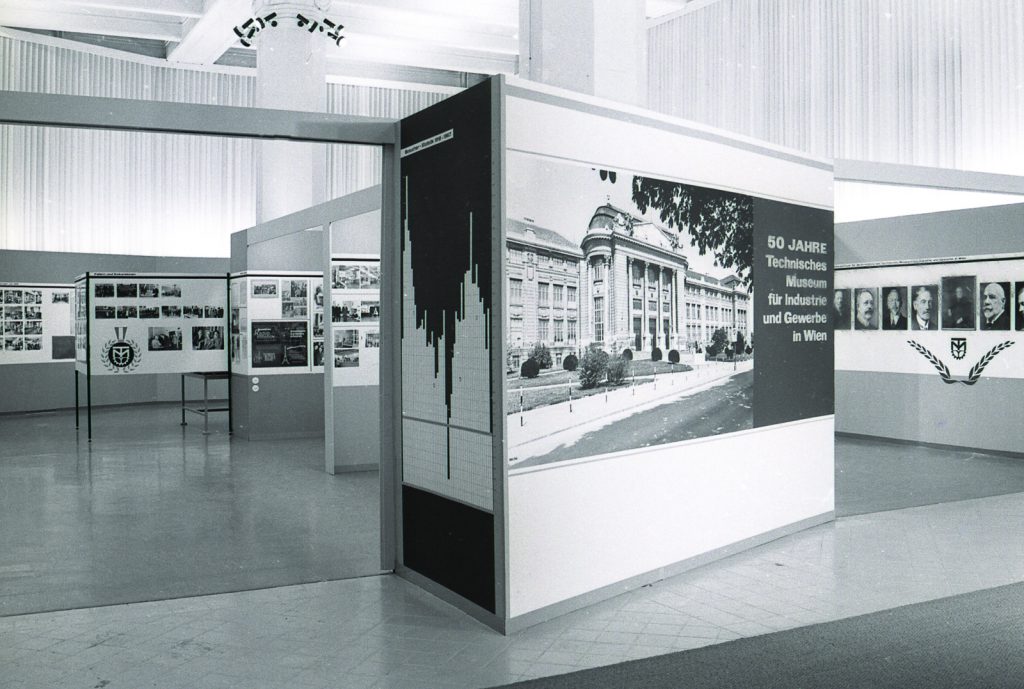
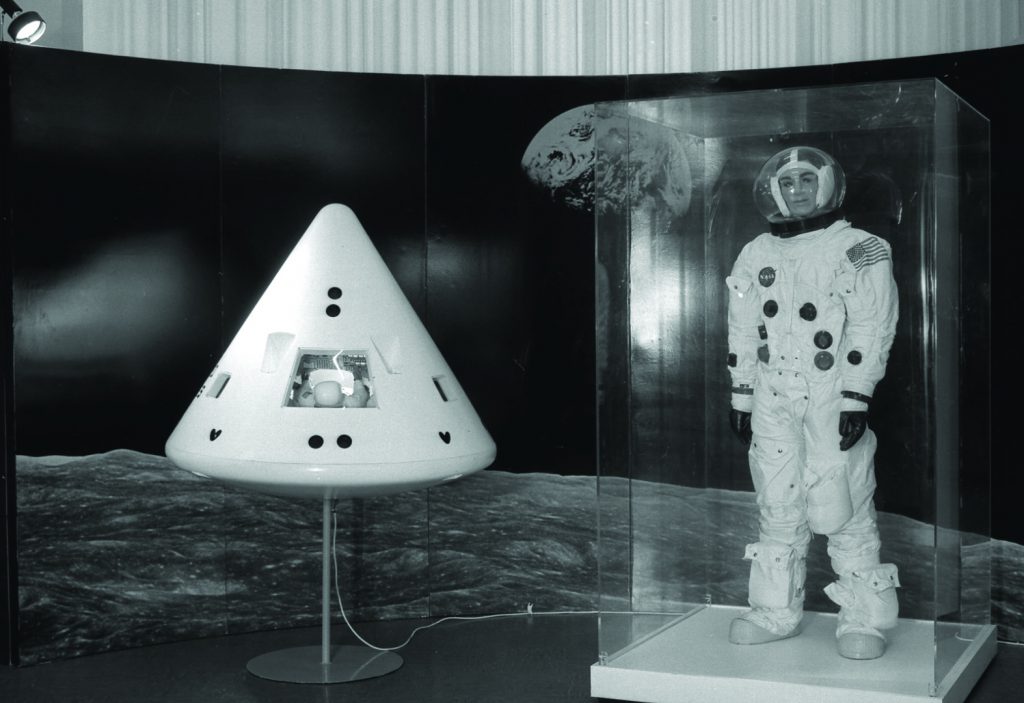
The 1950s ushered in major changes in the permanent galleries at the Technisches Museum Wien. The experimentation room was dismantled and replaced by a series of dioramas: a pharmacy in Baroque times, a copy of Liebig’s laboratory from the Deutsches Museum and an alchemist’s kitchen.
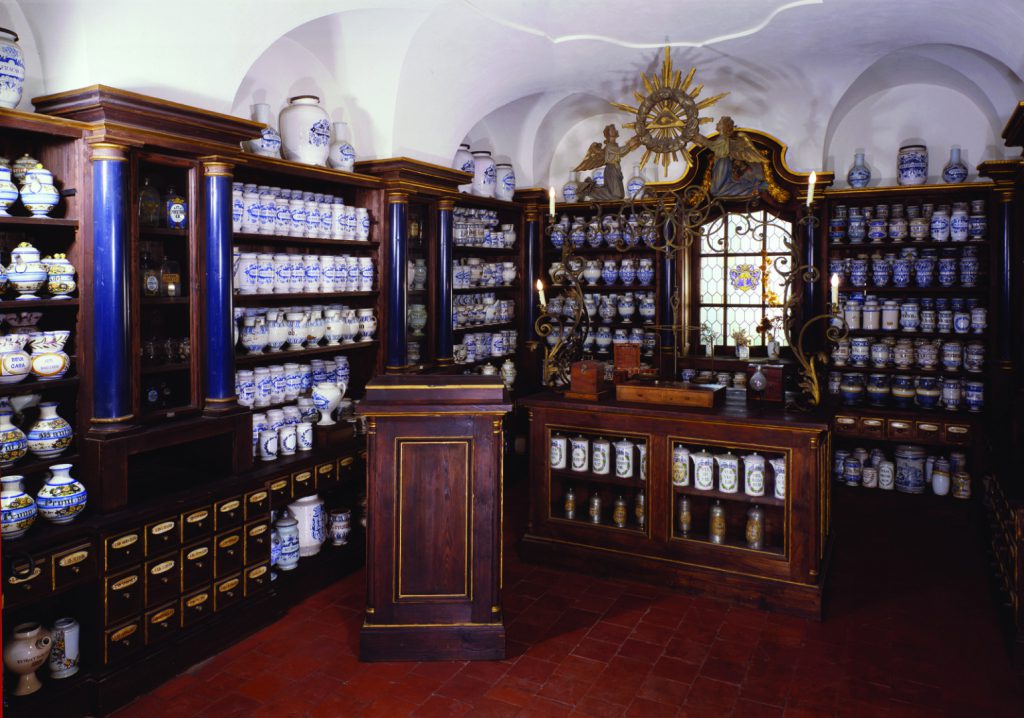
However, whereas the subjects of the temporary exhibits might have seemed to have kept up with the news, the topics hardly reflected the enthusiasm over science of the times, and indeed the underlying approach of museums in Austria had stopped evolving during the decades following the 1950s. This phenomenon, brought on by tenured civil-servant directors resulting in a state generally regarded as near ‘fossilisation’, and the buildings’ poor state of repair, eventually sparked a broad public debate. In 1985, the journalist, writer and city councillor for Vienna, Jörg Mauthe, had triggered the discussion with a series of articles on the plight of Kunsthistorisches Museum: ‘The situation is unbearable, a scandal, a national disgrace that is simply incomprehensible’ (Mauthe, 1985). A year before, Mauthe had visited museums in the US, deeply impressed not only with the quality of exhibitions but also with the management methods these museums employed. His admiration highlighted the reversal since the 1920s of national standing in museum innovation. In 1986, Vienna’s then deputy mayor, Erhard Busek, called Technisches Museum Wien – in reference to its state of ‘fossilisation’ – a ‘museum of a museum’. By 1987, international media had caught on to the debate: ‘We are losing our position as a great cultured nation and are well on our way towards museum pre-history’, one comment read. Proposals were raised to demonstratively close down the Museum (’Rebellion in Wiener Museen’, 1987). The Austrian government pledged two billion schillings (more than $2.5 billion in the 1980s) to finance the urgently needed refurbishment of the country’s museum buildings.
In the late 1980s the Museum’s building was in very bad structural shape, a general overhaul including a new exhibition concept was to achieve the desired innovation effect. But even before the Museum’s closure for extensive refurbishment work in 1992, a small hands-on science department based on the American Science Centre concept was set up to test its acceptance among Vienna’s conservative museum goers. Experiences with this new section clearly showed the importance of an innovative re-focus of the Museum’s orientation.
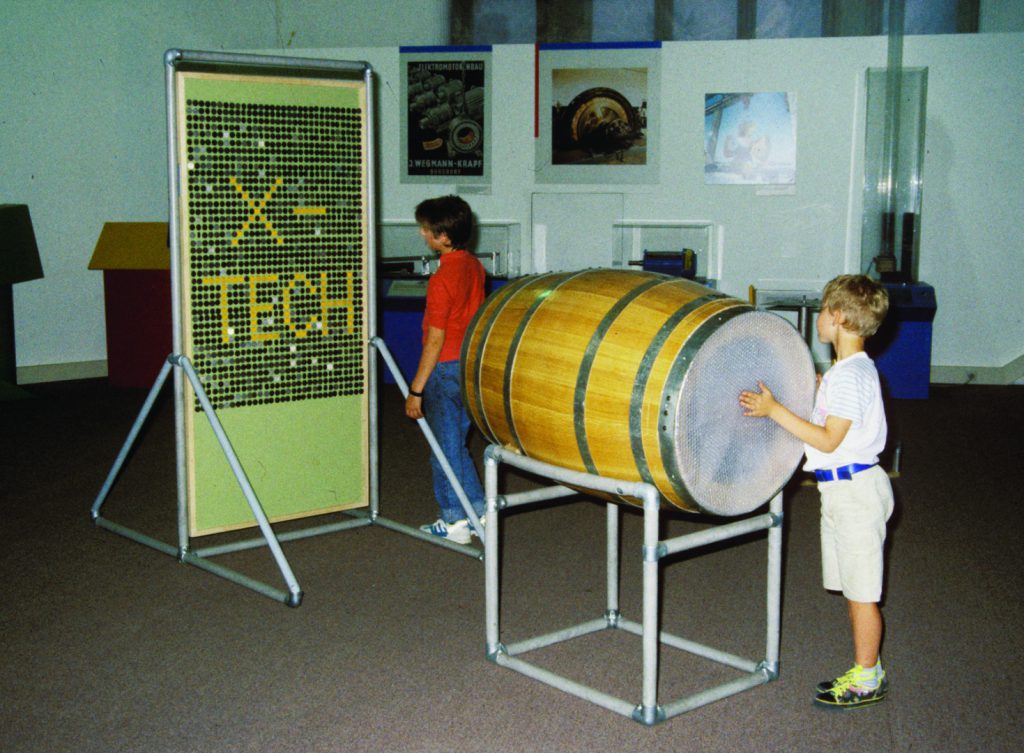
Refurbishing the Museum took longer than expected. During the seven years before its reopening, the Museum made do with just a few special exhibitions, only two of which dealt with science subjects: Chaos, a show taken over from Gemeentemuseum in Den Haag, and an exhibition commemorating the centenary of the discovery of X-rays, which went on to be shown at locations across Austria over the following years.
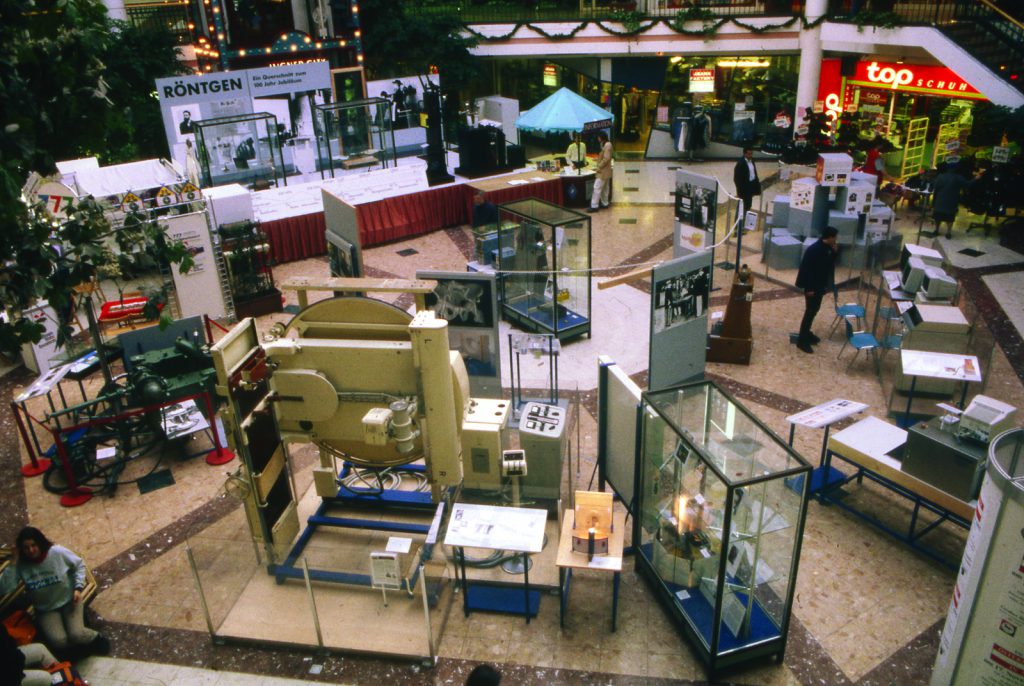
It was only in 1999 that half the permanent galleries reopened to the public (the available budget did not cover more) with a new design and exhibition concept. After much discussion, science had been given a permanent place in the building’s basement. Overall, the floor space was now divided as follows:
19,650m² of exhibition space
15,150m² dedicated to permanent exhibitions
8.1 per cent dedicated to science issues
The area available to the sciences was divided in two: one area was dedicated to predominantly historical objects illustrating the evolution of scientific knowledge (Nature and Knowledge), the other (Phenomena and Experiments) took the form of a Science Centre, which was dismantled in 2014 to be changed into a part of the new Transportation gallery (a clear indication of changes once again in the self-image of the Museum). The department’s innovative design – compared to both the old museum and other science exhibitions – meant that, rather than following the classification of the natural sciences as they are taught at university, the exhibition focuses on science methodology, adopting a hands-on approach to complement displays. This was a novel concept among European museums and has since inspired a number of other institutions to follow suit. It represents a successful attempt to introduce new didactic and educational methods to complement text, image and media in order to communicate a subject matter.

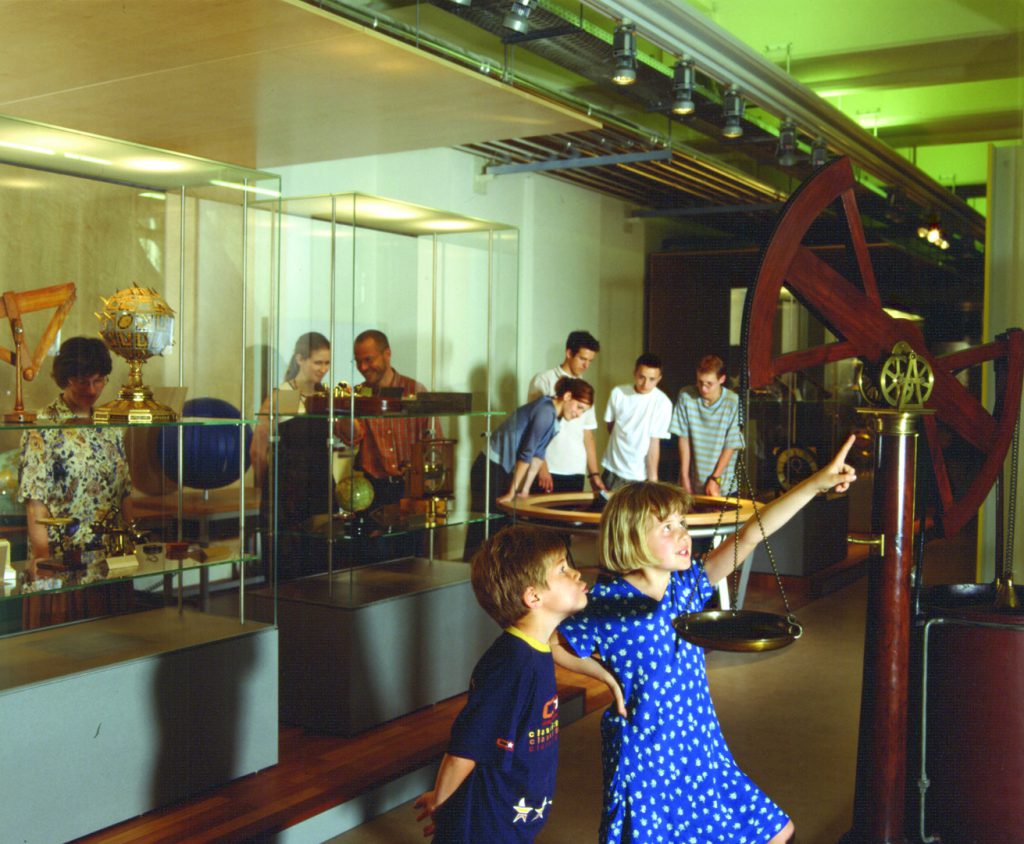
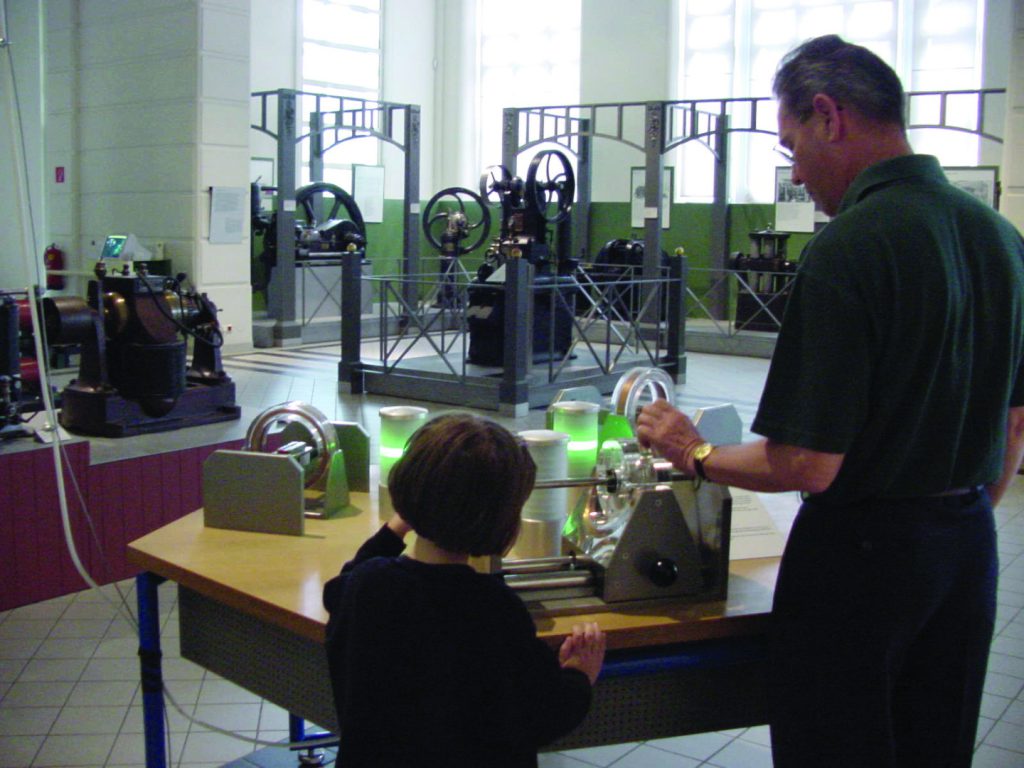
The well-placed use of science-centre elements, including hands-on features and other communication strategies, such as science shows, within the setting of a conventional exhibition of historical artefacts pioneered a new type of visitor-oriented presentation, which may help to bridge the gap between these two diverse cultures of communicating science and technology. This gap often seems hard to close because the specialist’s expert view tends to obscure other requirements. The communication of science knowledge must be adapted to the needs of ‘ordinary’ visitors, especially those of children and teenagers, as without proper context, scientific phenomena are little more than mindless entertainment. Science centres are hugely popular and even conventional museums can no longer do without science-centre elements. Thus, after visiting Technisches Museum Wien, the Mannheim Landesmuseum für Technik und Arbeit set up three experimentation areas, ‘Elementa’, in an attempt to fight declining visitor numbers, and changed its name to ‘Technoseum’. Berlin’s Museum of Technology has had a science centre for twenty years: ‘Spektrum’, which is housed in a separate building.
The objective of the new exhibition concept was summarised as follows:
A wide variety of historical objects are presented in their cultural, economic and societal contexts, complemented by cutting-edge educational methods to make complex issues easier to understand. The museum perceives itself as an interdisciplinary organisation and a platform for controversial discourse. It makes use of a wide range of educational strategies to reach different cognitive types.
The most recent development (2016) is a new gallery called Innovation forum, displaying aspects of future technology.
There was one group of visitors that the Museum was not yet addressing: pre-school age children, for whom only guided children’s tours were on offer. Many international museums had already begun to specifically target young children. The Tropenmuseum in Amsterdam, the National Museum and Eksperimentarium in Copenhagen, and the London Science Museum were seen as pioneers. In line with this intended diversification, a young-children’s area was established at Technisches Museum Wien, called ‘Mini TMW’ – the first of its kind in an Austrian national museum. The last department to open during the first phase of the Museum’s reopening, ‘Mini TMW’ was set up in 1999 and opened on 5 March 2000. It has been enjoying great popularity ever since and was therefore enlarged to double the size.
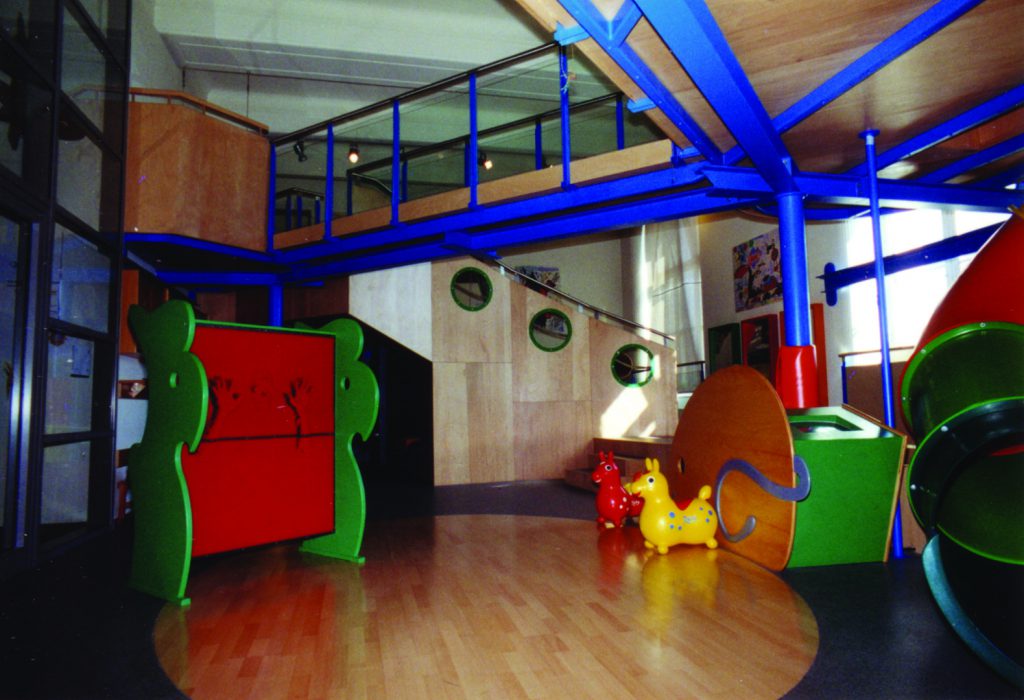
An overview of special exhibitions held at Technisches Museum Wien from 1999 to the present is illuminating. Compared to the period before refurbishment, technology-related exhibitions have gone down to 36 per cent (from 46 per cent) while science-related exhibitions are down to 9 per cent (from 11 per cent), offset by 55 per cent of special exhibitions on other subjects (again including art, photography, museum history, etc.). One of the reasons for this may be a shift in staff focus from technology to the humanities with the introduction of the new museum. Because of their focus on science, two projects in particular stick out from the bulk of exhibition programmes: an exhibition on basic research and an educational programme on enquiry-based learning.
The Museum’s basic-research exhibition
https://dx.doi.org/10.15180/170810/005In 2007, Technisches Museum Wien took a remarkable step towards basic-science education. Based on an Austrian Science Fund initiative, a new exhibition area was set up, ‘Basic Research – A Great Adventure’ (Abenteuer Forschung). In terms of its design and the issues it covers, this new section was specifically geared towards teenagers and young people. The concepts dealt with include batteries, bionics, cryptography, X-rays, cochlear implants and game theory, complemented by areas focusing on the pace-maker and climate change.
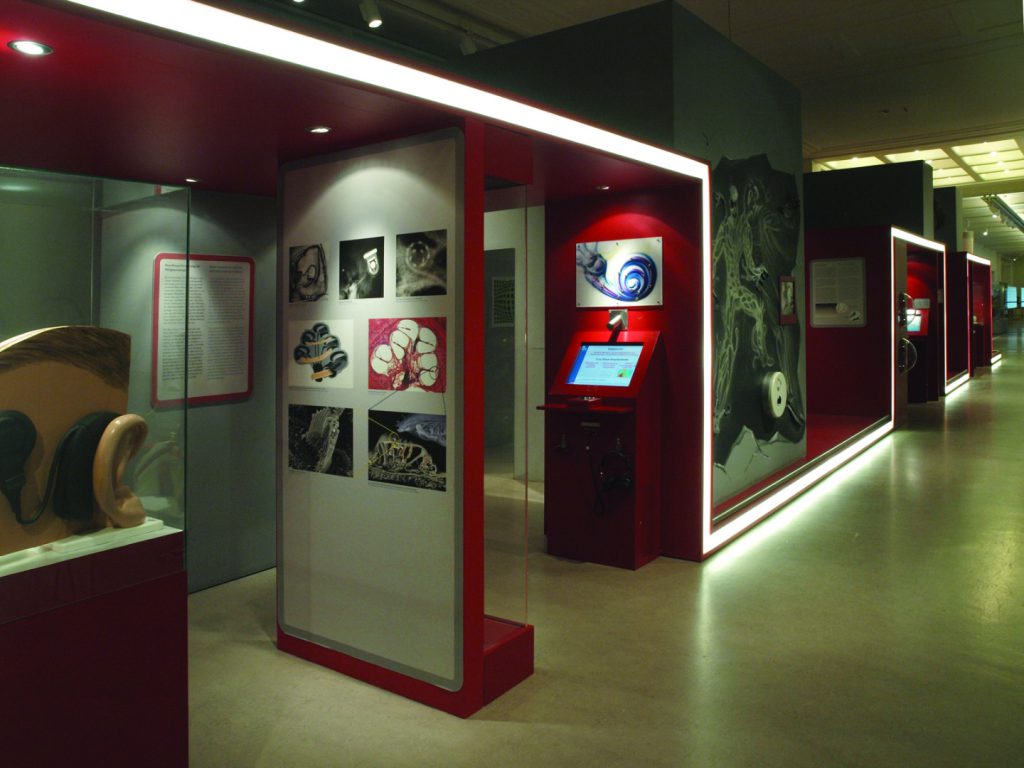
The main challenge in devising these areas was to reconcile cutting-edge science requiring considerable prior knowledge, with the needs of the target group: school kids aged 10 to 14 whose schooling had left them ill-prepared for dealing with complex science. The key issue thus was to get across the basic scientific concepts with the help of easy-to-understand objects, texts, images and films. Despite these efforts, the exhibition remained best visited with the help of a facilitator or explainer – not because the texts were too difficult but because of the amount of advance information that needed to be presented in succinct form. The amount of this text went well beyond the reading habits of today’s young museum goers. The persistently poor results of the Austrian PISA test in 2010 for this age group regarding reading skills did not indicate any improvement in this area. Thus, this section of the exhibition, with its dramatically colourful design catering to the young visitors’ imagination, was in stark contract with the sophisticated issues it presented. Due to the partly problematic accessibility and the quality of the temporary design the exhibit was dismantled in 2014.
II. ‘Enquiry-based learning’: a science-education project
https://dx.doi.org/10.15180/170810/006Museums need to react on changes in society (an increasing number of children with non-German native tongue and decreasing scientific literacy), the educational system, learning environments and practices, and to such initiatives as PUSH (Public Understanding of Science and the Humanities) and SIS (Science in Society). Mere rearrangements of galleries cannot always meet such requirements. As a consequence, in 2008 a two-year project was initiated aimed at communicating science and scientific research to primary school-age children by means of ‘enquiry-based learning (‘Forschendes Lernen’). Activities organised at Technisches Museum Wien and in the participating schools introduced children to science issues related to ongoing special exhibitions and to basic physics concepts, such as electricity, magnetism, forces, kinetics, etc. A special focal point of the programmes was on improving the children’s language skills, including those of children whose first language is not German. Another project objective was to create networks between science organisations, primary schools and teacher-training facilities with the aim of developing educational programmes for concrete science-related research questions. As the project (and its intended ‘beacon’ character) represents a promising approach to museums’ educational programmes, it will be dealt with in more detail here. The project was launched in cooperation with an external organisation (Verein Science Center Netzwerk, 2010).
Theoretical basics
https://dx.doi.org/10.15180/170810/007Primary schools nowadays already often organise field trips to Science Centre institutions (museums, botanic gardens, zoos, etc.) that provide expert knowledge and special didactic competences, especially by offering opportunities for autonomous, hands-on science learning. So far, though, the role of these institutions in supporting primary education has not been used to its full potential.
Partnerships between Science Centre institutions and primary schools aim to encourage these organisations to cooperate more closely at the regional level. They provide a framework for the development and implementation of joint educational programmes based on primary-school curricula as well as teachers’ needs. Such programmes generate supplementary teaching material and suggestions for lesson plans that complement a visit to the respective Science Centre institution and help the children to achieve more sustainable learning. In their respective regions, the participating schools become ‘mini competence centres’ that encourage other school types and grades to participate.
Accompanying evaluation research formed an integral part of the project, allowing the participating Science Centre institutions, teachers and schools to reflect on their own work and assess their progress. By integrating the experiences of four additional science related research institutions, the basis was laid for expanding the jointly developed programmes and tested model partnerships to other institutions, regions and schools. The initiative can also be seen as a pilot project internationally as science education at primary level is generally regarded as a weak spot all over Europe.
Science teaching plays a rather minor role at elementary-school level both in Austria and in Europe. Nonetheless, scientific literacy is internationally regarded as a key skill required of responsible citizens of a world increasingly shaped by science, and the elementary school is formative for developing an interest in science issues. Acquiring basic science skills should thus be on a par with reading, writing and arithmetic in this age group. But rather than making children memorise science facts that are likely to be outdated in just a few years’ time, priority should instead be given to helping children understand fundamental science concepts and develop the skills they need to relate to scientific thinking. And although primary-school curricula do include science competences, present teacher training and current framework conditions often leave primary-school teachers feeling overwhelmed by science teaching.
It was with such thinking in mind that the Technisches Museum Wien and the University of Education Vienna (Kirchliche Pädagogische Hochschule Wien/Krems) agreed to collaborate between 2008 and 2010 on a project entitled, ‘Explorative learning – with all our senses (Forschend lernen – mit allen Sinnen). This two-year project aimed to create an encompassing pedagogical environment enabling the Museum and all participants to implement methods of hands-on science learning into the way they think, work and operate. Learning in different locations connected by lively communication on educational-science and pedagogy-discourse matters turned out to be both a challenge and a great opportunity. The different institutions involved – Museum, schools, University of Education – each regarded themselves as learning organisations constructively collaborating as equal partners in advancing the project by means of productive exchange. The University of Education’s didactics department helped teachers to implement a teaching focus based on a hands-on science approach while the Museum offered science lessons in the participating schools. Both measures contributed to added professionalism: a noteworthy result was the significant improvement in the children’s language and deduction skills, which is confirmed by the teachers. This may also be due to the fact that learning success is all the easier to assess the more articulate a child is in talking about a subject. Many school children also experienced a noticeable boost in motivation (a fact they are also keen to talk about), which is enhanced by the opportunity to learn in a variety of places.
Overall, the experiences with the six participating primary-school classes paint a clear picture of success for methods of hands-on science learning at non-school venues. Because of their structure, organisation and thematic focus, these institutions can offer different incentives and novel, surprising stimuli to children that schools usually do not provide. The reflection and communication element provided by the University of Education Vienna offered not only advice and didactic support, but also the opportunity to embed project activities in current science-learning theory. For the participating teachers, this proved to be a chance to take a close look at their own teaching. The Museum, in turn, benefited because the project forced the Museum staff involved to focus on a situation and target group not usually at the centre of their attention.
Finally, the participating University students (and teachers-to-be) benefited from the sustainable experience of learning about the concepts and methods of hands-on science learning and the close links between theory and practical application. The necessary theoretical discussion of the actual requirements for learning and teaching at a variety of learning locations can be seen as a contribution to the ongoing debate on the quality of teacher training. The didactic research accompanying the project consisted of regular evaluation sessions as well as a continuous review and reassessment process on the part of the project leaders. In addition, a bachelor thesis was written at the University of Education Vienna on key project questions.
Key project objectives
https://dx.doi.org/10.15180/170810/008The overall aim of the project was to improve primary-school students’ competencies in experimentation (forming of hypotheses, trying out variations, deduction), acquiring knowledge, communication skills, everyday orientation, perception skills, the ability to think for oneself and science-related issues.
In addition to these research-related questions, the various modules also placed special emphasis on the children’s language skills. This is because it is not only important for children to intuitively comprehend a situation but also to be able to adequately formulate their deductions and discuss them with others. Here, factors such as a first language other than German as well as handicaps and disabilities were to be taken into account. For the participating teachers, another objective was to discover new teaching methods and learn about new science topics. For Technisches Museum Wien, the aim was to motivate teachers to introduce more science and technology-related topics in class and to make use of the Museum facilities as a non-school place of learning. In aid of this aim, teaching materials, lesson plans and practice lessons were provided. In general, the main aim was to interest primary school-age children in the methods of scientific research. The scientific method has continuously evolved since the seventeenth century and has proven remarkably successful in sciences such as physics, chemistry and medicine:
– elimination of contaminating conditions (‘lab conditions’)
– carrying out experiments
– forming a hypothesis to explain a phenomenon
– testing this hypothesis by means of further experimentation
– developing a theory
– testing the theory
– interpretation of contaminating influences in a ‘real-life’ situation.
Even simple experiments like comparing the fall velocity of a stone versus a sheet of paper can be used to demonstrate these steps (finally the influence of the aerodynamic resistance will be found out). The aim was to teach the children that scientific research requires deduction skills but also that science is just a tool created by people to describe specific aspects of the world. Once children are no longer too much in awe to ask questions in this way, the objective of ‘enquiry-based learning’ has been achieved.
The network formed by the collaboration of the University of Education in Vienna, the involved primary school classes and Technisches Museum Wien is offered as a model for the implementation of the methods of hands-on science learning in schools. The main advantages of cooperating like this include the opportunity to make use of the resources and experiences of the other institutions and the ability to learn from each other. As a teacher-training facility for young teachers, the University of Education Vienna proved an excellent partner. The Museum, in turn, could make use of its wide range of contacts with experienced teachers to provide fresh input for their teaching. In collaboration with six primary school classes, the two cooperation partners create learning environments for specific science topics in order to put research-based hands-on/minds-on science learning into practice. The University of Education in Vienna sought, as a main objective, to encourage precise thinking and intellectual curiosity. It regards scientific research as a requirement for all teachers, and a key element and basic approach to be implemented across all subjects. Another aim is the establishment of a new teaching, learning and research culture that regards heterogeneity as both a challenge for and the responsibility of teachers and teachers-to-be. The University of Education in Vienna supports students in further developing their expert and social competences. As a consequence of the project, ongoing cooperation between the Vienna Museum and the University was established and has since continued.
Giving science learning time, space and meaning
https://dx.doi.org/10.15180/170810/009Research into science teaching also focuses on the cooperation with non-school institutions and locations for learning. Thus, the cooperation project also aimed to establish positive interaction between schools, the University of Education Vienna and Technisches Museum Wien. The concept of hands-on science learning here was designed to create learning opportunities by allowing the participating institutions to complement each other and use each others’ resources in a form of ‘complementary didactics’.
Encouraged by this underlying concept, by the wide range of science issues taught in the individual classes and by the vast variety of the objects available from the Museum the project leaders decided not to opt for a fixed programme. Instead individual ways of learning and teaching were to be found for each class. The challenge here was to pinpoint the best resources, methodology and procedure for the topic chosen by the class. In this way, key questions formulated by the class formed the basis of their science project and the processes it involved. Thus, the project was also defined as responding to the individual needs of, and providing individual support for, all participants. Careful monitoring and supervision was designed to meet the high standards of complex education processes in a flexible, demand-oriented, topical, and both practical and theory-led way.
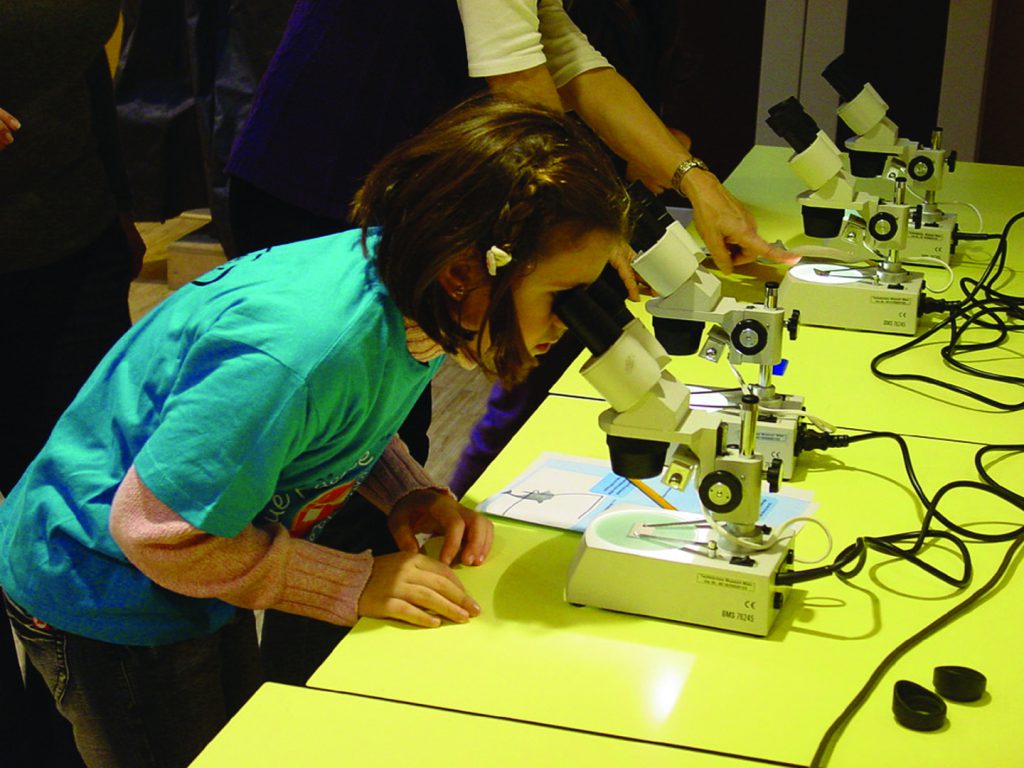
Methods
Hypothesis-led learning in principle includes these basic steps:
- Conjecture
- Observation
- Argumentation
- Hypothesis development
- Hypothesis testing
Depending on the specific issue at hand, only a selection of the above steps proved necessary. An opening workshop introduced the class to the thematic focus (or research project). The children are invited to contribute preliminary ideas on the process to come. At this point, it may be helpful to ask the children to start a project portfolio (research file) which they use to collect all the material they are going to assemble throughout the project. If required, this first session can also be used to set off an evaluation process by means of an ex-ante questionnaire investigating the status quo for comparison with the results at the end of the project. The method of anchored-based learning uses a recurrent object (doll, mascot, etc., like ‘Twinky’ in Figure 17) to ‘guide’ the children through the individual modules of the project, help them overcome initial barriers and to provide an anchor for individual learning steps throughout the project. This method is particularly suited for heterogeneous groups, e.g. classes with a high percentage of children whose first language is not German or have a large share of special-needs children.
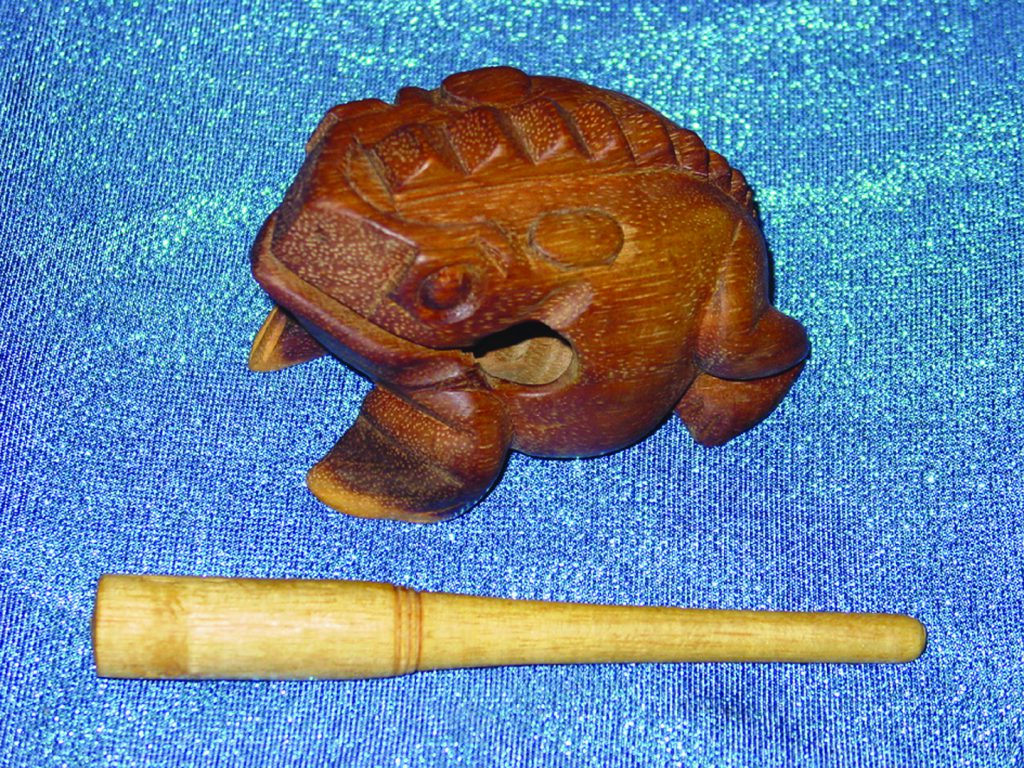
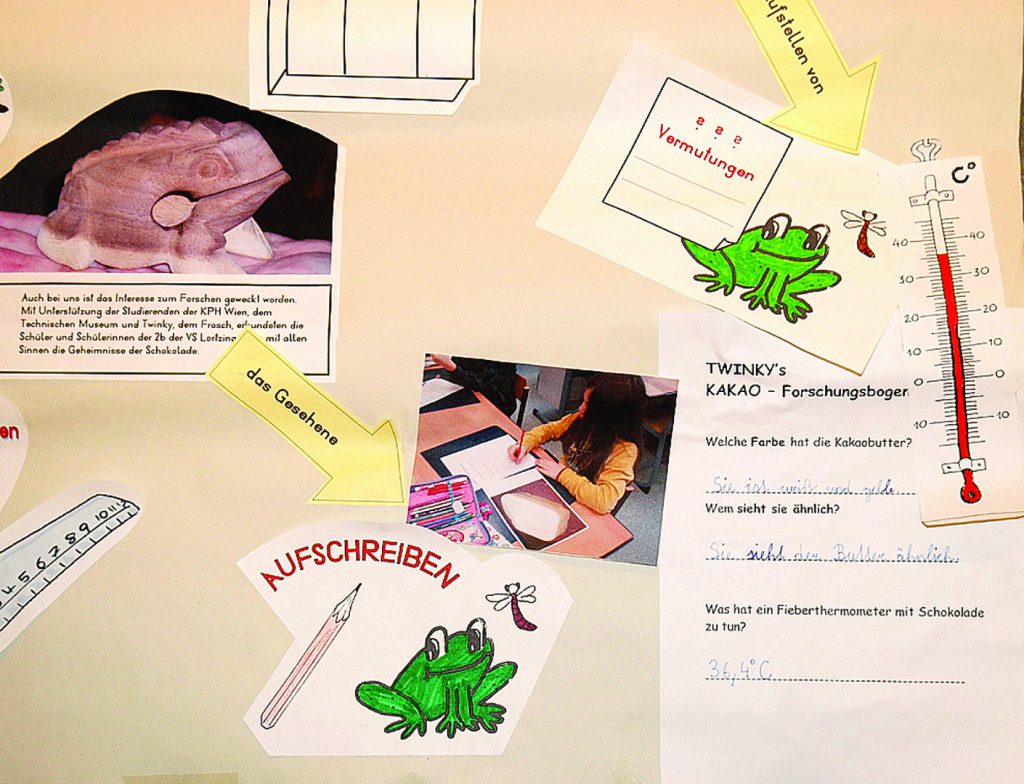
Examples of activities over the project progress were:
- Chocolate making (parallel to a temporary exhibition about food making)
- Physics of flight
- Easy physical experiments
- Electricity and magnetism
Starting a ‘research folder’ can be an important didactic step for assessing and collecting material. In a first step – and a boost to their motivation – the children designed the portfolio themselves. Afterwards they were invited to keep all important project-related artefacts – worksheets, other material and ‘personal objects’ – in the folder. For the teacher, the project portfolio proved helpful for evaluation purposes, especially to assess skills acquisition and improvement. Similarly, completing worksheets helped the children to consolidate newly acquired knowledge by answering questions on their own or in small groups. A series of worksheets guided the children through the individual modules, providing step-by-step help for finding the solution to a problem or choosing the appropriate procedure.
Another method is using cartoons, which are particularly well suited for introductory modules. In our case, they were used to invite children to think about the questions of science, research and technology for the first time. Cartoons are also perfectly suited for bilingual teaching. Thus, the topics of ‘Observing’, ‘Classifying’, ‘Defining’, ‘Investigating’, ‘Measuring’, ‘Predicting’, ‘Making Models’, etc. can be used.

In order to investigate the sustainability of the learning activities different questionnaires were used.
Science didactics, as it is understood by the University of Education Vienna, puts active learning at the heart of a teacher’s work, and this is also at the core of the hand-on science approach. Based on a moderately constructivist understanding of learning, this requires an orientation along specific methods, which are translated into cartoons. At the very start of the project it became obvious that language barriers play less of a role in acquiring new skills than originally assumed as almost all participating children came into contact with the subject matter for the first time and thus had little previous experience and terminology to refer to. This was confirmed by the evaluation of the data gathered. This resulted in unexpected improvements in the children’s language and articulation skills, which helped to remove major communication barriers. Thus, children who tended to be quiet in school turned out to be remarkably communicative. This allows us to conclude that non-school learning contributes significantly to the children’s motivation to learn and to their communication skills. It also considerably improved the children’s self-assessment competences.[1] This improvement was demonstrated on the occasion of a final presentation of the two-year project at the Technisches Museum. Various children prepared posters and a ten-minute presentation which was shown on stage of the Museum’s banquet hall. One of the six school classes involved in the project used English for their presentation as they were bilingually educated.
Summary
Until relatively recently, science education research has primarily focused on children’s learning in schools. However, the gaze of the research community has broadened and much more attention is paid to the educational affordances of museums, science centres, botanic gardens, etc. The two-year project had significant impact on different fields and on skills of children. Linguistic competence, logical argumentation and understanding of interrelationships were much more developed comparing with lectures in classrooms. Autonomy, teamwork, communication and social competence were strengthened. In-depth knowledge, understanding of the role and methods of research and familiarity with basic scientific concepts were improved. The stimulating role of a cooperation between schools and museums is now much more evident than before.
Tags
Footnotes
Back to text


